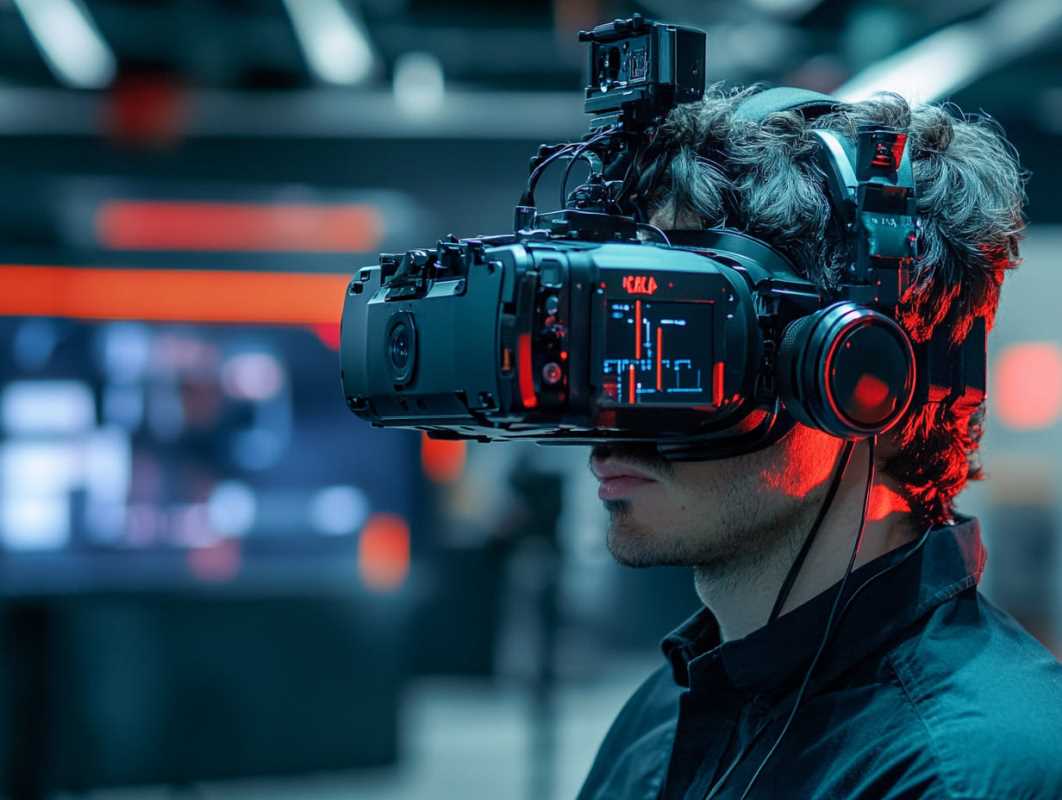The emerging landscape of virtual reality (VR) shows that personal branding has transcended traditional boundaries, offering unprecedented opportunities for individuals to establish and showcase their unique identities. As VR technologies integrate more into daily life and professional environments, cultivating a distinct personal brand within these virtual spaces has become essential for career advancement and personal growth. This evolution necessitates a thoughtful approach to personal branding, ensuring that one's professional persona remains impactful and authentic in an increasingly digital world.
Understanding Personal Branding
Personal branding involves the conscious effort to create and influence public perception by positioning oneself as an authority in their industry, thereby enhancing their credibility and career prospects. It is not merely about self-promotion but about defining and communicating one's unique value proposition to the world.
Key elements of personal branding include:
- Authenticity: Being genuine and true to oneself.
- Consistency: Maintaining a uniform image and message across all platforms.
- Visibility: Actively engaging and being present in relevant spaces.
- Expertise: Demonstrating knowledge and skills in specific areas.
- Reputation: Building trust through reliability and positive interactions.
Ways to Build Your Brand in VR
Developing a personal brand within virtual environments requires tailored methods that utilize the unique capabilities of VR. Here are effective approaches to establish and enhance your brand in the VR space:
- Define Your Brand Identity: Clearly articulate who you are, what you stand for, and what makes you unique. This foundation will guide all your virtual interactions and content.
- Create High-Quality Virtual Content: Develop engaging and relevant content that showcases your expertise. This could include virtual presentations, interactive experiences, or VR-based tutorials.
- Engage Actively in VR Communities: Participate in forums, attend virtual events, and collaborate with others in your field to increase your visibility and network.
- Use Avatars and Virtual Presence: Design a professional and memorable avatar that reflects your personal brand. Your virtual appearance can significantly impact how others perceive you.
- Seek Feedback and Adapt: Continuously seek input from your VR audience and be willing to adjust your methods to better align with your branding goals.
Tools and Platforms for Personal Branding
Numerous tools and platforms exist to assist in building and maintaining a personal brand within the VR landscape. These resources offer various functionalities to enhance your virtual presence and engage with your audience effectively.
Oculus Rift is a leading VR headset that provides immersive experiences, enabling users to create and participate in virtual events and networking opportunities. Its expansive ecosystem allows for the development of customized applications tailored to personal branding needs.
AltspaceVR is a social VR platform that facilitates interactive meetups, conferences, and collaborative projects. It serves as an excellent venue for showcasing expertise, hosting webinars, and connecting with like-minded professionals in a virtual setting.
VRChat offers a highly customizable environment where users can design unique avatars and spaces. This platform is ideal for creative professionals looking to establish a distinctive virtual identity and engage with diverse communities.
LinkedIn VR integrates professional networking with virtual reality, allowing users to attend virtual career fairs, conduct meetings, and participate in industry-specific events, thereby enhancing their personal brand within a professional context.
Challenges and Opportunities in VR Branding
Building a personal brand in virtual reality comes with its own set of challenges and opportunities. Navigating these effectively can determine the success of one's branding efforts in the VR space.
One significant challenge is the potential for technical barriers. Not everyone has access to high-end VR equipment, which can limit the reach and inclusivity of your personal brand. Additionally, the novelty of VR means that best practices for personal branding are still evolving, requiring individuals to continuously adapt and learn.
On the flip side, VR presents unique opportunities for immersive storytelling and interactive engagement. For instance, professionals can create virtual portfolios or host live demonstrations of their skills in a way that static web pages cannot match. A real-world example is Jane Doe, a virtual architect who uses VR to showcase her designs, allowing clients to experience spaces before they are built, thereby enhancing her credibility and attracting more business.
Effective Communication and Networking in VR
Effective communication and networking are pivotal in establishing a strong personal brand within virtual reality. Here are some tips to enhance these aspects:
- Master Virtual Etiquette: Understand and adhere to the social norms of VR environments to make positive impressions.
- Be Present and Engaged: Actively participate in conversations and events to increase your visibility and approachability.
- Utilize Interactive Tools: Use VR’s interactive features, such as voice chat and gesture controls, to communicate more effectively and build rapport.
- Build Meaningful Connections: Focus on establishing genuine relationships rather than merely accumulating contacts.
- Attend Virtual Networking Events: Participate in industry-specific VR events to meet key players and expand your professional network.
Enhancing your professional relationships within VR can lead to significant career opportunities and collaborations.
Building a personal brand in the virtual reality era requires a thoughtful blend of authenticity, engagement, and adaptability. By using the right tools and embracing the opportunities VR offers, individuals can effectively establish and grow their personal brands, positioning themselves for success in an increasingly digital and interconnected world.
Embracing the virtual reality era is not just a trend but a fundamental shift in how personal branding is approached. Adapting to these changes ensures that your personal brand remains relevant and influential in the future of professional development.
 (Image source: Midjourney)
(Image source: Midjourney) 


.jpeg)


